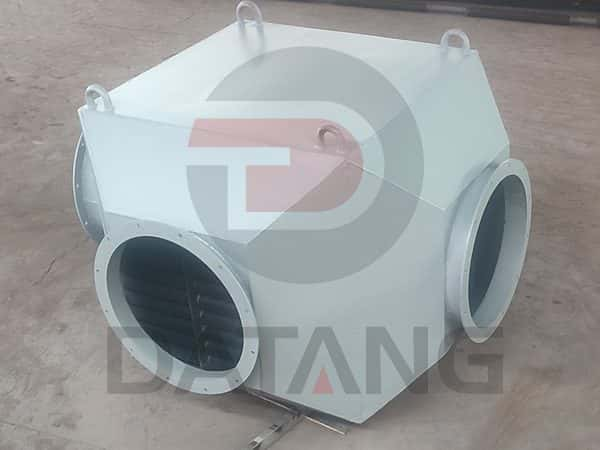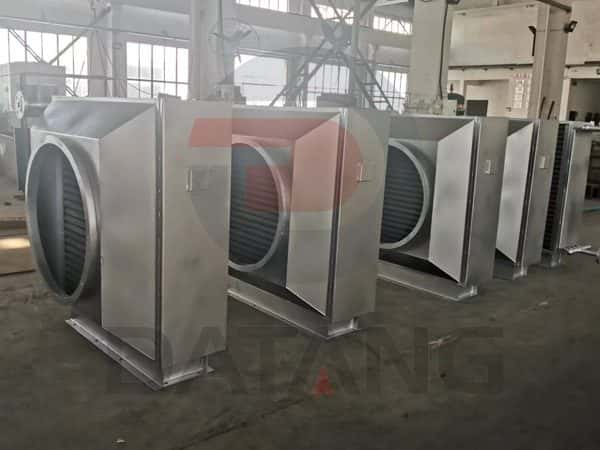Finned tube heat exchangers Large logarithmic evaluation temperature difference: The calculation shows that under the same inlet and outlet temperature, the logarithmic average temperature difference in countercurrent flow is always larger than the temperature difference when the two fluids flow together.
The larger the △T, the more heat transfer area can be saved. Therefore, in the design of the heat exchanger, the designer always tries to make the hot and cold fluid flow in the opposite direction.

Finned tube heat exchanger
When the hot and cold fluids flow countercurrently, the local heat transfer temperature difference on both sides at any position on the heat transfer surface is relatively uniform, and there will be no situation where the heat transfer temperature difference is too large at one end and too small at the other end.
The heat transfer temperature difference is relatively uniform, which means that the heat transfer per unit area is also relatively uniform, and there will be no heat transfer due to excessive heat transfer at one place, or even beyond its heat transfer, while the heat transfer at the other end is small in both countries, which makes the heat transfer area underutilized situation.

Another advantage of countercurrent heat transfer between cold and hot fluids is that the outlet temperature T2 of the cold fluid can even exceed the outlet temperature T1 of the hot fluid.
As can be seen from the above example, the outlet temperature of the cold fluid is 40°C, which is greater than the heat transfer of the hot fluid. In order to make the temperature of the cold fluid have more room to rise. In downstream conditions, this cannot be done.
